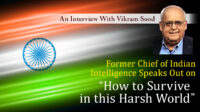“The Battle Over History,” 70 Years After the War, Has Begun
Iris Chang “The Rape of Nanjing” and the spiritual message, “Swear to Heaven, Did the “Nanjing Massacre” Really Happen?” A part of the American-Chinese “conspiracy” has been revealed.
The spiritual message of the spirit of Iris Chang, who in 1997 wrote “The Rape of Nanjing” and let the world know about the “Nanjing Massacre”, has recently been recorded.
“People of Japan, I’m sorry. My book is full of fabrications. Please take it out of print.”
She claims that, after the book’s publication, she gradually began to think amidst all the controversy that, “perhaps all of the victims from China’s civil war are blamed on Japan.”
She stated, “I was murdered!” concerning the 2004 pistol suicide.
Chang Called “The Rape of Nanjing” a Lie
Chang’s book made an “accusation” appealing to Westerners, saying during the Japanese army’s occupation of Nanjing in December of 1937, they killed from 260-350,000 Chinese and raped 20–80,000 women.
The book describes such revolting scenes as the following.
“Not only did they commit rape, but they cut open the belly of the women, cut off their breasts, and nailed them alive to the walls.”
It was claimed that two years were spent investigating, and presenting coverage on survivors, but in this spiritual message, Chang confessed that it was all a lie.
Chang was Chinese American, and her grandfather was from China. That a beautiful black haired Oriental journalist wrote, “Not only did they commit rape, but they cut open the belly of the women, cut off their breasts, and nailed them alive to the walls,” the book became a bestseller selling over 500,000 copies.
The book was criticized by American historians stating that, “the number alleged to be killed is more than the population of Nanjing at the time,” and, “it’s uncritical of the Tokyo Trial.” The work received a barrage of criticisms from modern Japanese historians saying, “The number of victims and the cruel depictions lack evidence.” The photos featured could not be verified as to whether they were from around the Nanjing area at that time. The photo introduced by Japan’s Graph magazine saying, “women returning from farm work, protected by Japanese soldiers,” but then captioned to, “the Japanese soldiers raped thousands of women,” is a representative sample of that confusing and misleading journalism.
Chang was clearly at a disadvantage, but never did she yield to corrections, saying, “They are reminiscent of holocaust deniers.”
The Post War Controversy of “The Nanjing Massacre”
“The Nanjing Massacre” became known to Japanese in the GHQ produced radio program “Shinsou wa Kouda”(“The Truth Is This”) that was begun in December of 1945 under their occupation. It was claimed therein that the Japanese army had occupied the capital Nanjing in China, and during a 6~7 week period, Japanese soldiers had strategically killed hundreds of thousands of civilians, and raped tens of thousands of women.
At the Tokyo Trial in November of 1948, it was judged that, “100,000–300,000 people were victimized by the arson, looting and assault by the Japanese army.”
However, at the time of the incident, there were over one hundred Japanese journalists and cameramen in Nanjing, and not one said that, “there was a massacre.” But it was not possible to contradict the GHQ.
However, in the 70s when many involved had reached retirement age, Asahi newspaper’s Katsuichi Honda resurrected that “great massacre”. OB reporters who knew the reality well, protested, but the newspaper silenced it. In 1985, the Chinese government built the “Nanjing Massacre Memorial Hall.”
During this time, debate raged on incessantly in Japan.
The Reason Why There Was No “Massacre”
The following eight points became clear from those debates:
(1) None of the American missionaries from the 3rd party nation who were in Nanjing at the time had witnessed a massacre or rape by the Japanese army. At the Tokyo Trial, Reverend Magee stated that there was only one case where a Chinese who appeared to be an illegal combatant (soldier in ordinary clothes) was shot trying to escape. The missionaries had written in letters after the entry of the Japanese army that, “we were happy that outside was peaceful,” and, “order was established by the Japanese army, and the situation shall turn for the better,” and as such they point to the fact that there was no indiscriminate massacre of civilians.
(2) Some of the missionaries like Bates and Fitch insisted that there was a “great massacre” of 10~30,000 people, but they were in fact propagandists working for the KMT Party who wanted to make the Japanese army appear to be a cruel military troop.
(3) Not once was there a protest against the “Nanjing Massacre” from the leaders of the KMT including President Chiang Kai-Chek against whom the Japanese army was fighting. Chiang Kai-Chek gave hundreds of radio speeches thereafter but never once did he mention it. On the other hand, they kept having foreigners like Bates keep talking about the “great massacre”. This in itself points to the fact that they did not officially protest the massacre but rather this was pure propaganda in the making.
(4) There was no basis in the judgment that the Tokyo Trial made that, “there were 100,000-300,000 victims.” Burial records were used as evidence, but the charitable organization, Suzendo, who buried 110,000 bodies, had evacuated and were not active in Nanjing, and that number was determined to be a fabricated number following the war.
(5) The population of Nanjing at the time was about 200,000, as claimed by international conferences by foreigners and the Nanjing police. After the Japanese occupation, the population rose to 250,000, indicating that the city’s condition had been completely restored.
(6) The commander-general Iwane Matsui of the Japanese army proclaimed to his troops that, “since the Japanese army entering a foreign capital had not been done since the dawn of history, this is a great event that the world will be watching. So any looting or inadvertent misfire will be punished very strictly.” This was announced after careful discussion with an international law scholar. In truth, if a certain lieutenant had brought home a women’s shoe that was found on the street, that would have been enough for him to be court-marshaled, and so martial law was thoroughly complied with, and there was absolutely no room for some organized “massacre”. There were, incidentally, about ten Japanese soldiers who were punished for illegal acts of looting and rape.
(7) The Japanese army had carried out an operation to clear out Chinese soldiers wearing civilian clothes (guerrilla soldiers) inside Nanjing, and as a consequence, some foreigners mistook this as a “massacre”. Soldiers wearing civilian clothes came about when the leaders of the KMT army had fled, and some 60~70,000 Chinese soldiers had panicked. It is recognized by international that they were removed.
James Espy, the vice Council at the American embassy in Nanjing, reported back to his nation saying, “In the last days before the Japanese army entered, they (KMT army) undoubtedly violated the citizens and properties. The panicked Chinese soldiers shed their uniforms and in their desperation they even murdered for civilian clothes.”
(8) It has been revealed that before and after the fall of Nanjing, due to the confusion caused by the leaders fleeing, the KMT soldiers looted and burned down houses. Furthermore, the Chinese army had a habit of firing on their ally troops from the rear to encourage the front lines, and so there was a “massacre” there, but it was not in any manner related to acts by Japanese soldiers.
The Suicide Note That Read, “Are They the CIA? They Are Hounding After Me”
Chang was discovered early morning in November of 2004 in a car on the freeway in Santa Clara, California. She was dead from a gun shot to the head.
Due to the debates in Japan, the facts of the “Nanjing Massacre” had been revealed, and Chang herself must have realized her mistake. At time, she is said to have been investigating the “Bataan Death March” where American prisoners of war were made to walk 120 kilometers enduring starvation. Thus, the circumstances surrounding the suicide were suspicious.
Ten years later, Chang appeared in a spiritual message and spoke about what happened.
She stated that a Chinese lobby group had given her a large amount of material, and she wrote without inspecting them, but ultimately she was silenced by some organization that was perhaps Chinese or American.
According to a local American newspaper, Chang left a suicide note.
“I can never shake my belief that I was being recruited, and later persecuted, by forces more powerful than I could have imagined. Whether it was the CIA or some other organization I will never know. As long as I am alive, these forces will never stop hounding me.”
“I sensed suddenly threats to my own life: an eerie feeling that I was being followed in the streets, the white van parked outside my house, damaged mail arriving at my P.O. Box.”
After writing that she went on to say that her being sent to a mental institution the year before her suicide was the “government’s doing”.
In the spiritual message and in the suicide note, it is indicated that Chang’s was not a suicide, but that she was murdered by some huge conspiracy.
What was the “Conspiracy” by the Americans and the Chinese
What was this conspiracy? In the spiritual message, Chang suggested that in the 90s, America and China attempted to join hands, and lead the cold war, making Japan out to be the “enemy”.
In 1989, China had murdered 10,000 citizens by the military firing upon them at the Tiananmen Square incident. They had been judged as “a nation that is cruel and ignores human rights.” The Chinese government had tried to change this in the 90’s.
In fact, a propaganda group in America that had ties with the Chinese government, and had written “The Rape of Nanjing was supporting Chang” and it has even been revealed that her lecture circuit was backed up by them.
Meanwhile, in America, in 1995, fifty years after the war, there was a controversy over the bombings of Hiroshima and Nagasaki. At the National Air and Space Museum (one of the Smithsonian Museums), was displayed an atom bomb exhibition that asked the historical question, saying, “Was it right to drop the atomic bombs?” whereupon, the U.S. Veterans Administration and the media objected vigorously.
The planned exhibition investigated the decision-making process of the bombings. They asked, “Why did America ignore Japan’s efforts to make peace? Why didn’t America warn them beforehand?” Additionally the exhibition displayed the devastation that the bombings of Hiroshima and Nagasaki wrought.
The veterans insisted that, “if we had carried out Operation Downfall, a million American soldiers would have been killed. We had to prevent that.” Operation Downfall consisted of the “Operation Olympic” to Kyushu, and “Operation Coronet” to the Kanto region. Secretary of State, Stimson, after the war, published an essay in a magazine that claimed, “We saved a million soldiers.” President Truman also used that number to legitimize the atomic bombings. The veterans were standing by these arguments.
The media too retorted, saying, “The museum’s thinking is insane. They are trying to revise history.”
Meanwhile, the historians on the side of the museum took them on directly, saying, “General Marshall’s opinion at the time was that ‘the operation will not produce over 63,000 casualties’. The bombing was not necessary.”
In the end, the Council at the Smithsonian Institute, which included the Vice President and the Supreme Justice, decided to end the atom bomb exhibition. The controversy was over.
A few months after the decision, President Clinton announced that there is no need to apologize for the dropping of the atom bombs, and that President Truman’s decision was a right one.
“The Cruel Japanese Army” That Brought Together American and Chinese Interests
The atomic bomb that took over 200,000 lives in a second is against international law, which prohibits weapons that cause unnecessary harm and massacres non-combatants, and can be counted as one of the most horrific war crimes in history. It cannot be helped that a nation who would use such a weapon in pursuit of national interest should be called, “a most barbaric nation in the world”.
At the time too, the Commander-in-Chief, General Eisenhower on the European side had stated that, “Japan had already lost. The bomb is unnecessary.” And MacArthur and other generals of the army and navy opposed it unanimously.
Debating about “what to make of the atomic bombing,” became a taboo subject after the uproar of the atomic bomb exhibition, before such historical verification was done.
After the suicide of Chang, the American Magazine, Time, reviewed Chang’s work. “What Iris Chang left us with is how cruelly the Japanese army acted in Nanjing, as she unearthed historical materials, and that the number of victims exceeded that of the victims in Hiroshima and Nagasaki’s bombings.”
140,000 people died in Hiroshima and 70,000 died in Nagasaki, due to the atomic bombs. Add to this the 100,000 who died in the Tokyo Air Raids, and the number exceeds 300,000 dead. For America then, they need this “300,000 massacred by the Japanese army.” But the American air raids were not conducted only in Tokyo, but were done in over 200 cities, and the victims numbered up to 330,000. Indiscriminate killings in cities leading to a massacre of civilians is prohibited by international law.
The Jewish massacre by the Nazis were judged as “a crime against humanity” at the Nuremberg Trial after the war, but the slaughter of 400 thousand civilians by America is hard to distinguish from that.
Thanks to a “cruel Japanese army”, both China and America could relatively lessen their brutality. “The Rape of Nanjing” was what tied the mutual interests of both nations.
With a beautiful Chinese-American condemning an evil Japan, this “conspiracy” was guaranteed to succeed.
Without “the Brutal Japanese Military”, America Would Have a Problem
Not even in Japan do we hardly hear a call for responsibility over the atomic bombings. But that has roots in the censorship by the U.S. occupation.
The first censorship by the occupation forces happened with a certain newspaper that reported on the protest by Japanese on the tragedy of the atomic bombs.
Then the “Nanjing Massacre” was created by the GHQ produced radio show, but the censorship officer is said to have said, “Hiroshima and Nagasaki are crimes that, even if not more then at least on par with the brutality of the Japanese in places like Manila and Nanjing, and would offset their criminality.”
Of course, the massacre of civilians in Manila and Nanjing by the Japanese army has been shown to have not taken place, but it is true of today, as it was right after the war ended, that America needs the “brutal Japanese army” story to offset their own crimes of dropping the atomic bombs.
At the Tokyo Trial, the American lawyers in charge of defending the Class A war criminals that included Hideki Tojo, pursued the responsibility of the atomic bombings. The lawyer, Ben Bruce Blakeney was one of them.
“The atomic bombs were dropped by someone. Someone planned it, ordered it, and approved of it. They are now judging the (Japanese leaders). Are they not also murderers?”
During this statement, simultaneous interpretation was halted, and it was not even recorded by Japanese notes.
They argued how America cornered Japan and drew them into war with America, and stated that, “Japan’s attack on (Hawaii’s Pearl Harbor) was an act of self-defense.”
The American lawyers arrived in Japan as “assistants”, as the trial was to be held in English, but understood right away that Japan had not started an invasive war, and defended the “innocence of Japan”.
“The Atomic Bombings, If Anything, Was the Holocaust”
The Indian jurist, Pal, who wrote an opinion expressing the innocence of the defendants at the Tokyo Trial, stated, “if anything, the dropping of the atomic bombs is the holocaust.”
After, when the sovereignty of Japan was regained in November 1952, Pal returned to Japan and gave a speech in Hiroshima city.
“They knew well of (Japan’s intentions for peace), but still dropped the bombs with their awesome destructive power. It was an experiment.”
“To drop the bombs meant killing men and women, combatants and non-combatants, all indiscriminately. It is the most brutal form of mass murder.”
“Is it right to kill tens of thousands of people, innocent elderly people, children, women, civilians who lived peaceful lives, in order to save the lives of some thousand American soldiers? That those who are satisfied by such explanations use words like human rights or peace, makes us feel a deep sadness.”
Such a perspective is not rare even today.
In August of 2013, the spokesperson for the U.S. State Department stated, “Syria’s Assad regime using chemical weapons to kill civilians indiscriminately is against international law.” The English Reuters reporter then asked, “So does America having used nuclear weapons that killed many civilians in Hiroshima and Nagasaki go against your understanding of the international law?”
The American government’s “official perspective” can be seen in how the spokesperson responded, “I’m not going to answer that question.”
However, today when Japan and America are close allies, it would be inappropriate for Japan to ask the American president for an official apology or compensation. But they ought to stop their implied consent with China and Korea in their condemnations over the “Nanjing Massacre” or “the forced entrainment of comfort women,” just to hide the guilt over the crime of having dropped the atomic bombs.
America to Release a “Prisoner Abuse Film”
China Wants “Nanjing” as UNESCO Heritage Site

Actress Angelina Jolie directs the story of an American prisoner who was tortured by the Japanese army. China moves to have historical resources of Nanjing registered to the UNESCO Memory of the World. Is Japan going to be attacked by both America and China over historical issues again?
President Truman, who made the decision to drop the bombs, gave a radio speech ten hours after their dropping saying:.
“We used the atomic bomb on those who attacked Pearl Harbor without warning, those who starved, beat, and executed American prisoners.”
The attack on Pearl Harbor turned out to be a surprise by the Japanese army, but their targets were not civilians. President Truman had announced that the dropping of the atom bombs on civilians was retaliation for prisoner abuse.
The actress Angelina Jolie, who is also popular in Japan, plans to turn a novel into a movie, about the experiences of an American soldier who was tortured by the Japanese army in World War II. It is to be released later this year. The novel contains the following scene.
“Thousands of other POWs were beaten, burned, stabbed, or clubbed to death, shot, beheaded, killed during medical experiments, or eaten alive in ritual acts of cannibalism.” (Unknown p. 315)
Cannibalistic customs do not exist in Japan, but this film is already attracting a reputation as a major contender at next year’s Academy Awards.
2015 marks seventy years since the war ended. No doubt, a worldwide debate concerning the historical perspective of the Second World War will again arise. As anticipated, America has already begun to move in that direction.
China applied in June to the UNESCO Memory of the World for the registration of resources on the “Nanjing Massacre” and the “forced entrainment of the comfort women”. The decision will be made next summer. China too is making its expected move for next year.
Next Year Is When the Accusation of Being a “Criminal State” Shall Be Cleared
The “battle over history” for next year has already begun. How shall Japan meet it?
Japan had been used by America and China who ‘need’ the “Nanjing Massacre”, and has hindered Japan saying, “Japan being a criminal state; it must not, in accordance with Article 9, build up a military.”
However, when America is avoiding military action and war spreads across the Middle East and Asia, now is the time Japan must clear its name of being a “criminal state”. Japan must then legitimately defend itself, and be able to take on the responsibility of protecting Asia. This is what Japan ought to aim for as the 70th year after the war approaches.
(Jiro Ayaori)



















